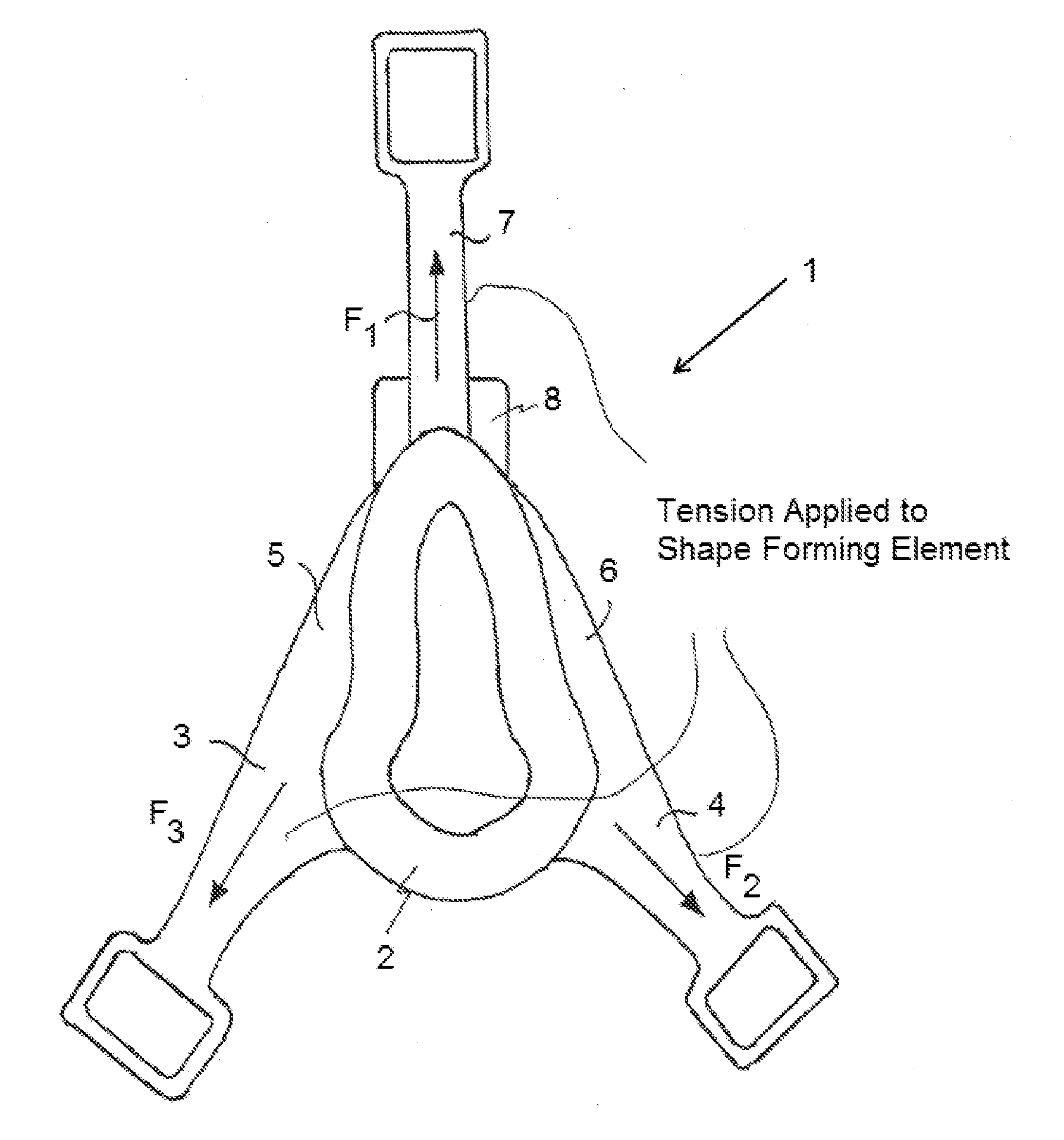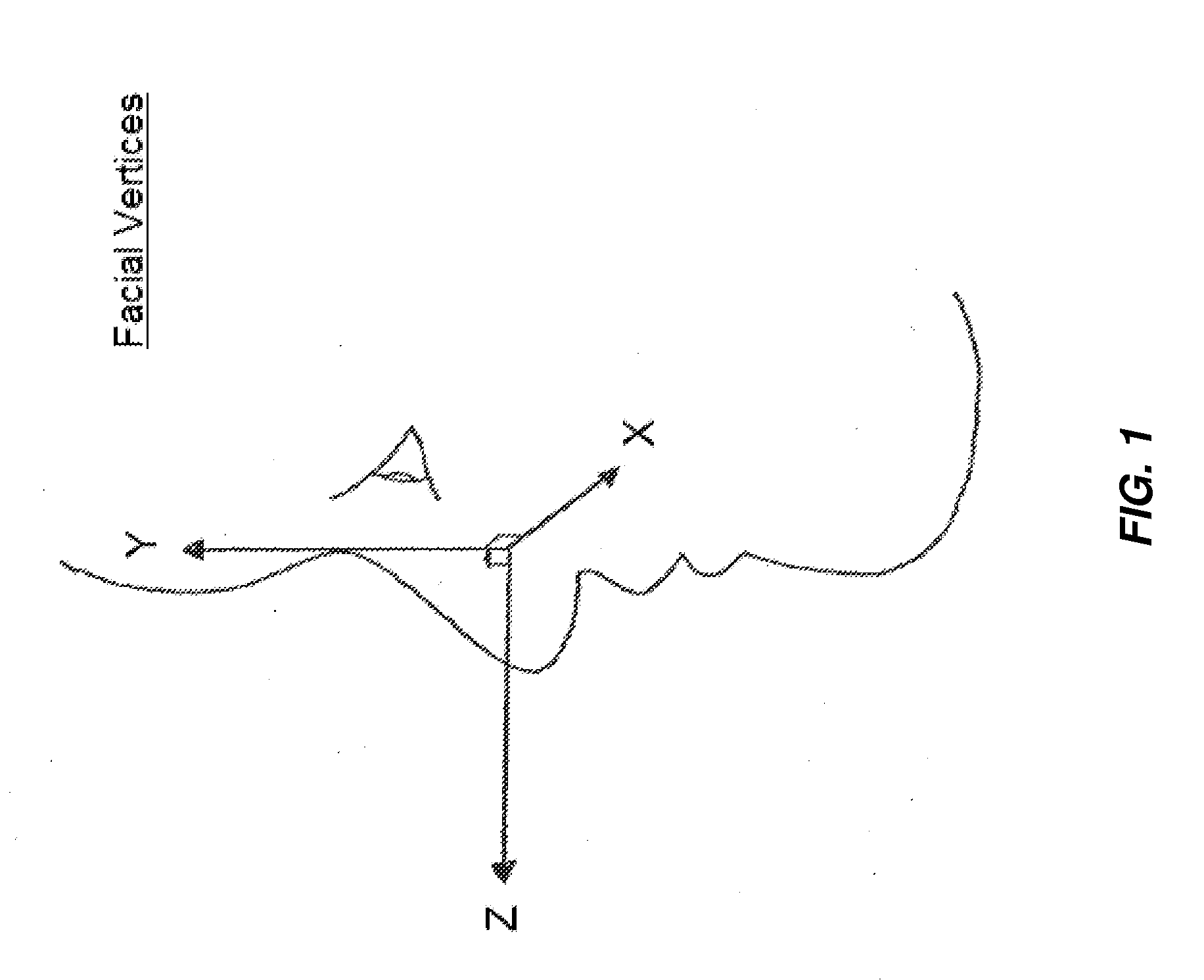Respirator mask
a mask and respirator technology, applied in the field of masks, can solve the problems of patient discomfort, masks that do not fit properly, and impaired patient's vision,
- Summary
- Abstract
- Description
- Claims
- Application Information
AI Technical Summary
Benefits of technology
Problems solved by technology
Method used
Image
Examples
Embodiment Construction
[0152]Referring to the drawings, FIG. 1 shows a schematic view of a face indicating the X, Y and Z axes. FIGS. 2 to 10 schematically illustrate a first embodiment of a mask 1 and the principles governing the design and operation of that mask in response to the use of an enlarged web contact portion. FIG. 2 shows a back side elevation of the mask 1. Mask 1 includes a flexible face contacting element 2 and straps 3 and 4. Each of straps 3 and 4 respectively include enlarged web portions 5 and 6 which transfer loads from the straps to the manifold. Mask 1 has been moulded in a single piece from a flexible elastomeric material, most preferably a medical grade silicone. However, any suitable elastomeric material may be used. Mask 1 further includes a third strap 7 and an air inlet 8. The mask of FIG. 1 is shown in a configuration without applied loads. FIG. 3 shows the mask 1 of FIG. 1 with corresponding numbering. The mask in FIG. 3 is shown with straps under a load creating a distortio...
PUM
 Login to View More
Login to View More Abstract
Description
Claims
Application Information
 Login to View More
Login to View More - R&D
- Intellectual Property
- Life Sciences
- Materials
- Tech Scout
- Unparalleled Data Quality
- Higher Quality Content
- 60% Fewer Hallucinations
Browse by: Latest US Patents, China's latest patents, Technical Efficacy Thesaurus, Application Domain, Technology Topic, Popular Technical Reports.
© 2025 PatSnap. All rights reserved.Legal|Privacy policy|Modern Slavery Act Transparency Statement|Sitemap|About US| Contact US: help@patsnap.com



